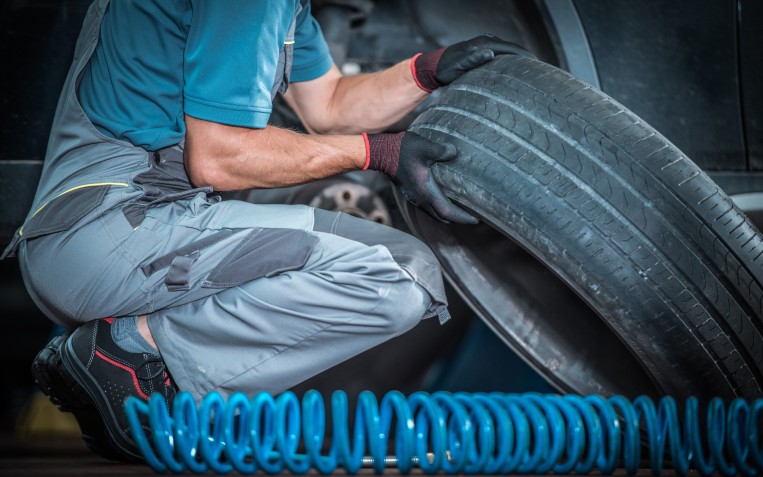How to change a tyre

Knowing how to change a tyre is an essential skill - even if you never want to use it! You can save both time and money by learning how to change your tyre and in this easy guide, we will tell you how you can change your tyre efficiently in a few easy steps.
Before you start
It is important to ensure you are parked in a safe space to change your tyre to not compromise your safety. Keep driving until you find a safe destination - once you have parked somewhere safely, put your hazard lights on to warn oncoming drivers. If you have a reflective jacket, then put this on also.
What equipment do you need?
- A new or spare tyre
- Wrench
- Jack
- Car handbook
- Wheel chock
- Wheel nut key
You may also find it handy to have a torch and gloves, however they are not essential.
Changing a tyre steps
- Position the wheel chocks - your wheel chocks work to prevent the car from rolling away whilst it is jacked up. Your vehicle handbook will advise you of the best lifting points for your car - you can use both thick blocks of wood or bricks as replacement chocks.
- Slacken the wheel nuts - you will most likely need to lever off the plastic wheel trim and then turn the wheel nuts anti-clockwise to loosen the nuts.
- Using the Jack - all cars are built with dedicated jacking points, so consult your vehicle handbook to find out. Aim to position the jack as close to the punctured wheel as possible and place a small plank of wood underneath to keep the car stable. After the jack has been positioned, you will want to raise the car approximately 10-15cm off the ground.
- Remove the flat tyre - once you have jacked up your car, you can fully loosen and remove the wheel nuts. Gently pull the tyre towards you until it is fully removed and place it flat on the ground.
- Insert the spare wheel - now it is time for your new tyre to be mounted - you can do this by simply sliding it onto the protruding hub bolts. Replace the wheel nuts and tighten them by hand.
- Lower the car - use the car jack to lower your car ever so slightly; once this is done, tighten the bolts so that the spare tyre is in contact with the ground. Using the wrench, ensure the wheel nuts are fully tightened.
- Fully lower the car - lower the car entirely on the ground. You may want to double-check the tightness of the wheel nuts.
- Check new tyre pressure - drive to your nearest petrol station to check the pressure of your tyres. Or if you have a tyre pressure gauge, you can check the tyre pressure straight away.
- Take your punctured tyre for repair - take your tyre to the nearest PTA garage for repair.
In need of tyre repair or new tyres? Here at PTA garages, we have a wide range of tyres from various brands. For more information, contact our helpful team today or pop into a garage near you.
Related Content

What do different tyre tread patterns mean?
The tyre tread is the part of your tyre that makes direct contact with the surface of the road. Tyres have different types of tread patterns that can influence tyre wear, noise level, fuel consumption rate, driving comfort and handling traction &ndas...

Tyre Size Guide
Understanding tyre size Understanding the size of your tyre can be confusing. Typically, you can find the correct tyre size for your vehicle us...

Summer vs all-season tyres
Naturally, the changing seasons will affect your tyres and should be changed according to suit. Your vehicle will benefit from having tyres that are s...

